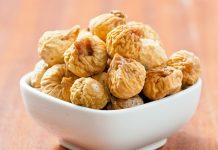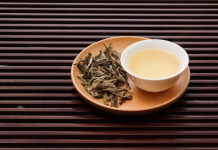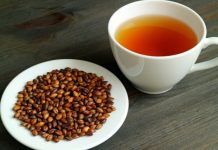The health benefits of Butternut Squash include improved immune function, good eyesight, presence of antioxidant activity, reduction in inflammations, presence of antibacterial activity and antifungal activity and anthelmintic activity.
Butternut Squash is one of the cultivars or varieties under squash or pumpkin family. Butternut squash is also called bell squash because of its shape. It’s also called butternut pumpkin in Australia and New Zealand. Butternut squash is little different from pumpkin as it tastes sweeter and has a nutty flavor. As it ripens, the sweet taste increases and it turns into deeper orange in color. Just like other winter squashes, butternut squash is not a vegetable but a fruit. In the United States, the round, orange cultivar is referred to as pumpkin while the rest are referred to using different names and one such name is butternut squash.
Butternut Squash is thought to have originated in north and central Americas. There is now evidence that it has been in cultivation since 3000 BC or before. After the arrival of Europeans, the fruit had been introduced to other parts of the world, including Europe, Africa, Asia and Australia.

Source: Betty’s Organics
Nutritive values found in Butternut Squash
According to the National Nutrient Database, from the US Department of Agriculture, the nutrients found in Butternut Squash include
| Nutrient Value | Per 100g | Nutrient Value | Per 100g |
| Water | 86.41 g | Energy | 45 kcal |
| Protein | 1.00 g | Total Lipid | 0.10 g |
| Carbohydrates | 11.69 g | Dietary fiber | 2.00 g |
| Sugar | 2.20 g | Calcium | 48 mg |
| Iron | 0.70 mg | Magnesium | 34 mg |
| Phosphorous | 33 mg | Potassium | 352 mg |
| Sodium | 4 mg | Zinc | 0.15 mg |
| Vitamin C | 21 mg | Thiamin | 0.1 mg |
| Riboflavin | 0.020 mg | Niacin | 1.2 mg |
| Vitamin B-6 | 0.154 mg | Vitamin A | 10630 IU |
| Vitamin E | 1.44 mg | Vitamin K | 1.1 mg |
Health benefits of Butternut Squash for children
Here are some health benefits of butternut squash for children.
Improves the immune function: Butternut squash has good amount of vitamin C and beta-carotene. Both of these micronutrients are essential in improving the immune system of your child. Vitamin C helps in strengthens the immune system and helps in protecting the body against infections.
Good for the eyesight: As butternut squash has good amount of vitamin A and beta-carotene, it is an ideal way to improve the eye sight. Beta-carotene can also protect from UV radiation as well.
Antioxidant activity: Butternut squash is high in antioxidants. These antioxidants are essential in reducing the free radical activity in the body. Free radicals are those byproducts of physiological processes and they tend to damage the cells. This can be reduced to a great extent by antioxidants. Antioxidants are those micronutrients which neutralize free radicals before they start damaging the body.
Reduces inflammations: Inflammations can be reduced to a great extent by butternut squash. With regular consumption of butternut squash you can reduce inflammations. The anti-inflammatory property comes from the presence of omega-3 fats in the form of alpha-linolenic acid.
Antimicrobial activity: Butternut squash has antimicrobial properties. Various diseases caused by bacteria and viruses can be reduced significantly by using butternut squash. Various studies today indicate butternut squash can be a good potential against fungal infections as well.
Anthelmintic properties: Butternut squash can also provide anthelmintic properties as well. Infants and children are at risk of worms settling in the intestines. This can be reduced to a significant extent by giving butternut squash to your child on a regular basis.
Various benefits from the seeds: Apart from the fruit, the seeds of butternut squash also provide several health benefits. These include rich in protein, minerals, mono-unsaturated fats, etc.
Measures to be taken while preparing Butternut squash for Kids
Here are some of the measures to be taken while preparing Butternut squash.
Is Butternut squash safe for babies? Yes, butternut squash can be given to your babies soon after solid foods have been started, which is usually at 6 months of age.
How to select the best Butternut squash? The best butternut squash selection lies in the color, texture and overall appearance. Butternut squash must be firm to handle without any soft spots or cuts. It must be orange in color. It is better to take smaller fruits than the large ones, if the intention is only to feed the baby.
How to cook Butternut squash? After the Butternut squash has been cleaned thoroughly on the outside, peel it and then begin cutting it. After cutting it, remember to remove all the seeds from the flesh without fail. These seeds are large enough to cause choking in infants. Cook the pieces as soon as possible.
How to cook Butternut squash? You can cook Butternut squash like most vegetables by either boiling it or steaming it. But, it is being fed to babies so to be more effective opt for steaming rather than boiling because several nutrients get dissolved and washed away during boiling process. Baking can also be a better choice. Make sure to puree it after cooking as it makes it easier for your baby to eat it.
How to handle Butternut squash seeds? Butternut squash seeds also offer good health benefits. Instead of throwing them away, you can peel the outer layer of the seeds and start collecting the inner soft seeds. After you’ve collected a handful of these peeled seeds, you need to pound them into a paste so that it can be easy for your child to have it. Avoid giving the seed paste to your infant. Wait until he or she is at least 1 year or older.












